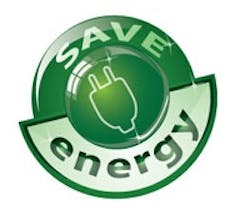A systematic energy audit can be broken into four phases: planning, investigating, implementing and sustaining. Proactive facilities strive to continually improve energy efficiency by repeating these phases at regular intervals. This two-part column will highlight each of the four phases. [pullquote]Planning phase: Once plant management commits to energy conservation, the following preplanning activities should be initiated: 1) determining the scope of the audit; 2) picking members of the audit team; and 3) developing audit tasks with a targeted timeline and assigning responsibility to members. These activities could take anywhere from a few weeks to a couple of months depending on the size of the facility and the scope of the audit. A relatively small audit team — between three to five experienced employees —should be tasked with the bulk of the audit work. At least one process and one maintenance person should be part of the team. A high-level manager should head this team or should be closely involved so necessary decisions can be made quickly.The audit team must decide which systems to investigate in the initial scope of the audit and the depth of the investigations. Audit scope always can be expanded later. However, it’s helpful to establish early criteria for expanding the scope along with how other phases of the audit will be influenced. Gathering the baseline data is an essential preplanning step; it serves as the reference point to compare, set target and track the progress. Utility bills are the most common source for the baseline data. Other sources include equipment specifications, manufacturers’ recommendations and maintenance records. Baseline data also include the plant profile — covering size and area, energy expenditure, major energy users and loads, and other basic facts.Investigation phase: This involves inspecting each system within the scope of the audit. It traces from the source of primary energy purchased to the point of final energy use. As much as possible, all energy-loss-related parameters should be measured or taken from the appropriate plant instrument panels. Standard engineering practices should be followed for all energy-savings calculations. Several well-established standard software programs are available for evaluating energy-savings values. The U.S. Department of Energy developed several such programs for optimizing energy systems and these are available free at https://ecenter.ee.doe.gov/Pages/default.aspx. The audit investigation should assess the efficiency, operating conditions of the equipment, including the duty cycle, load changes and controls. The length of this phase may extend several days or weeks depending on the plant’s size and the scope of the audit. The second part of this phase involves preparing the audit report, which should summarize the audit’s findings and recommendations in an organized and prioritized format. It should spell out, based on the audit measurements, the financial impact or potential cost improvement of each instance of controllable energy waste. The conceptual level details of each recommended action for reducing or eliminating the energy waste should be included in the report. If multiple remedial actions could eliminate or reduce the energy waste, they should be evaluated for the best-possible cost/benefit ratios. The appropriate remedial action could vary between plants for reasons such as differences in the cost of fuel the plant uses or local labor costs. For example, in one fine-chemicals plant the use of steam jet ejectors was recommended to replace the barometric condenser, while in a petrochemical plant a mechanical water-ring vacuum pump was recommended. Both recommendations improve the vacuum required for the process but the appropriate means were different because one plant was using bio-mass fuel to generate steam. Occasionally, an energy-savings action could create a safety risk. For example, electric tracing may consume less energy than steam tracing but may pose more of a safety risk when handling highly inflammable chemicals — so it’s better to opt for steam tracing. [For more on electric tracing, see "Make the Most of Electric Tracing."] Hence, any safety concerns should be addressed first before making an energy-savings recommendation.Budget restraints or plant shutdown limitations could prevent implementing all the recommended projects at once. Also, if excess air reduction is done first, then it would reduce the savings due to economizer installation. If steam demand reduction is implemented first, then it would reduce savings due to condensate recovery. So, double-check savings calculations after prioritizing the recommended projects. This will help management in planning their investment budget. More on the remaining phases of an energy audit cycle will be highlighted in next month’s column.
VEN V. VENKATESAN is Chemical Processing's Energy Columnist. You can e-mail him at [email protected]
About the Author
Ven Venkatesan
Energy Columnist
Ven Venkatesan is a former Energy Saver columnist for Chemical Processing.
Sign up for our eNewsletters
Get the latest news and updates


